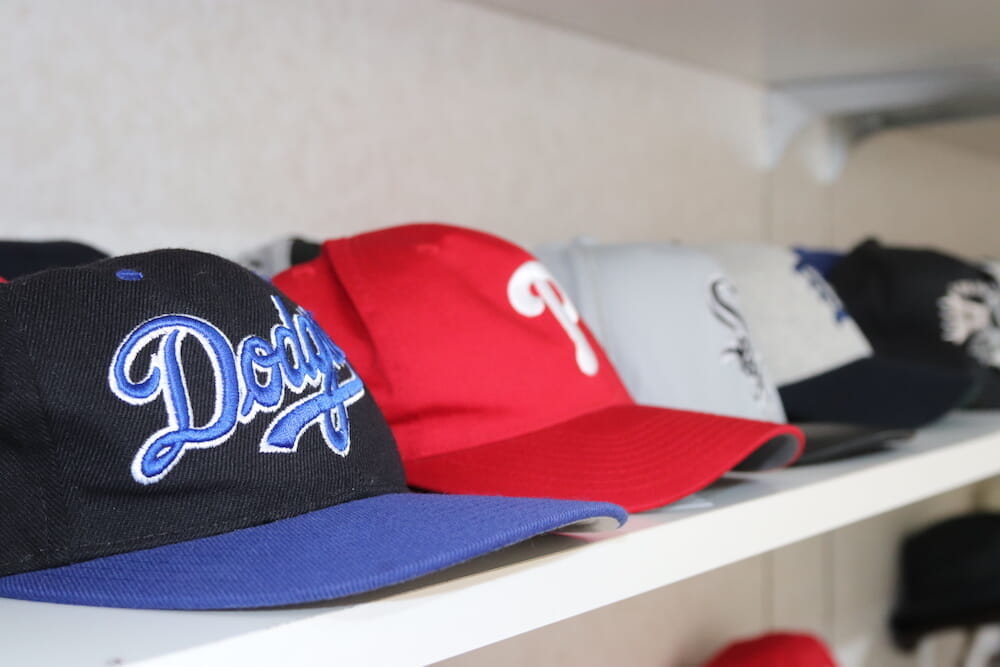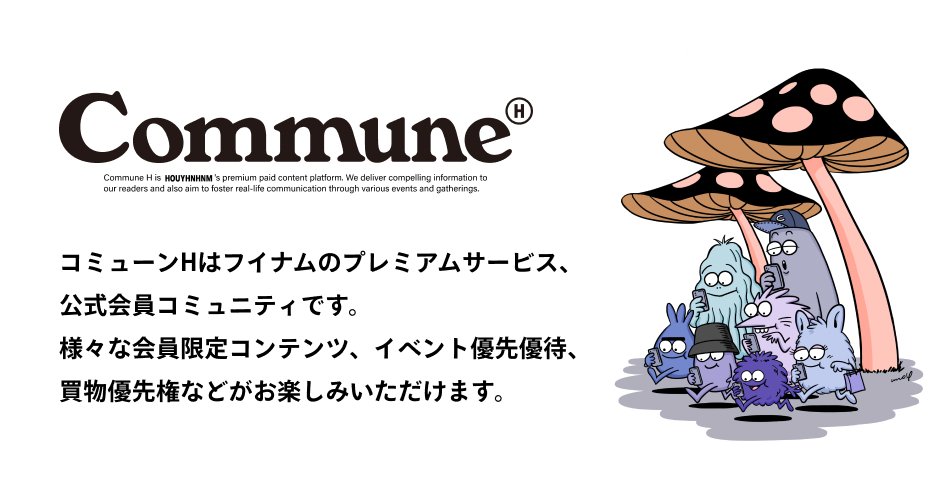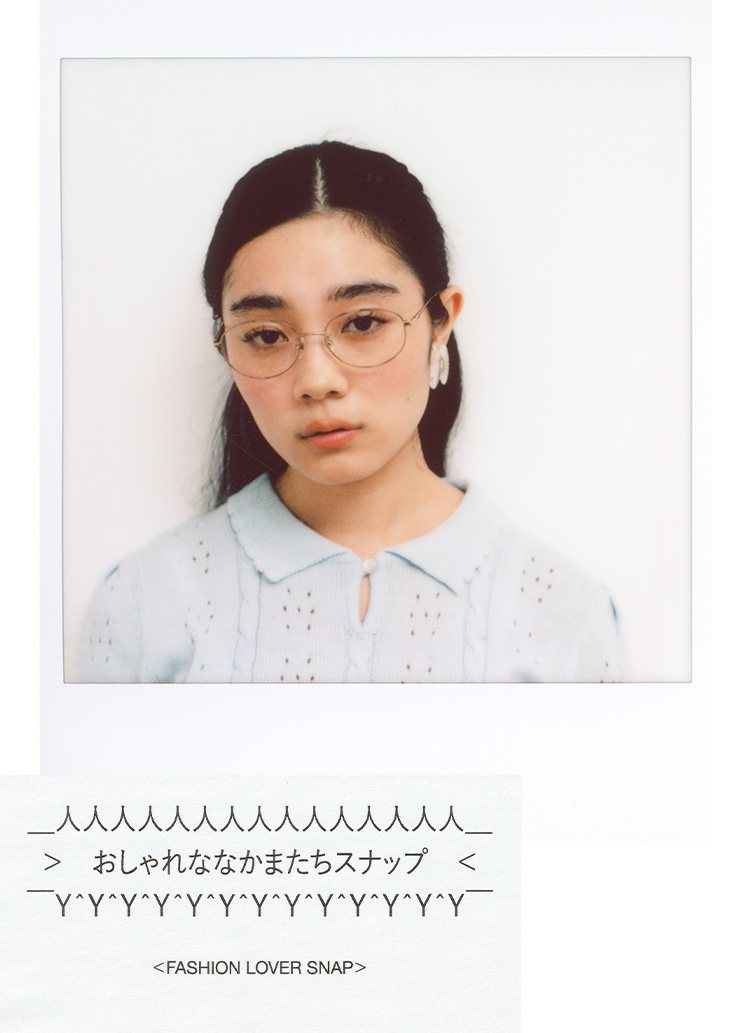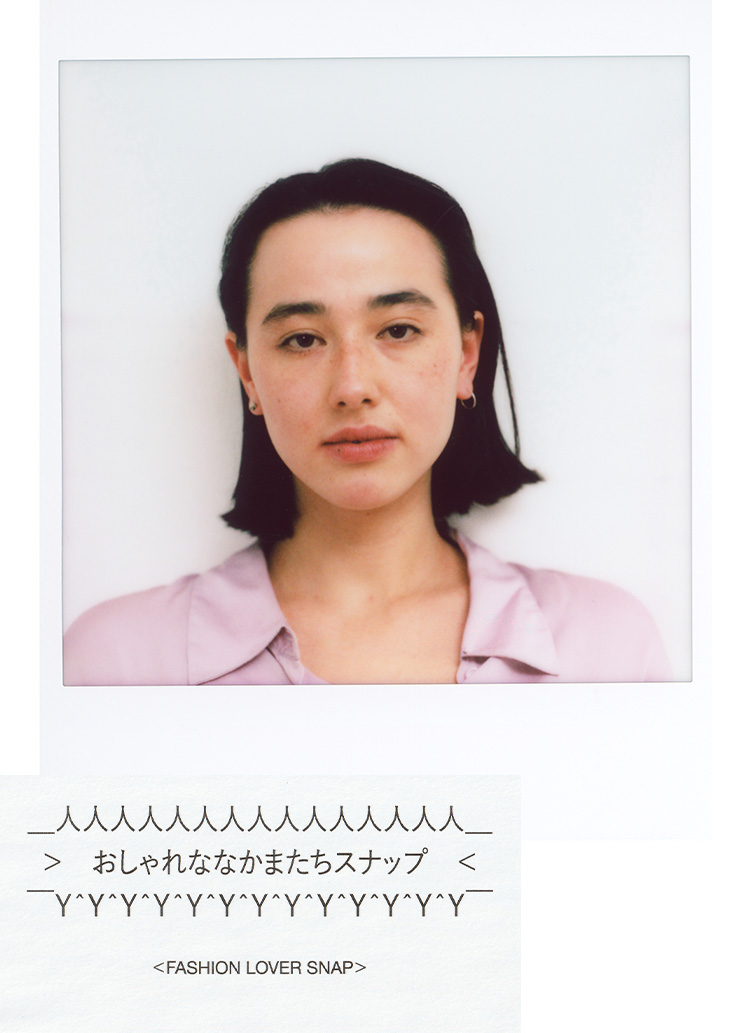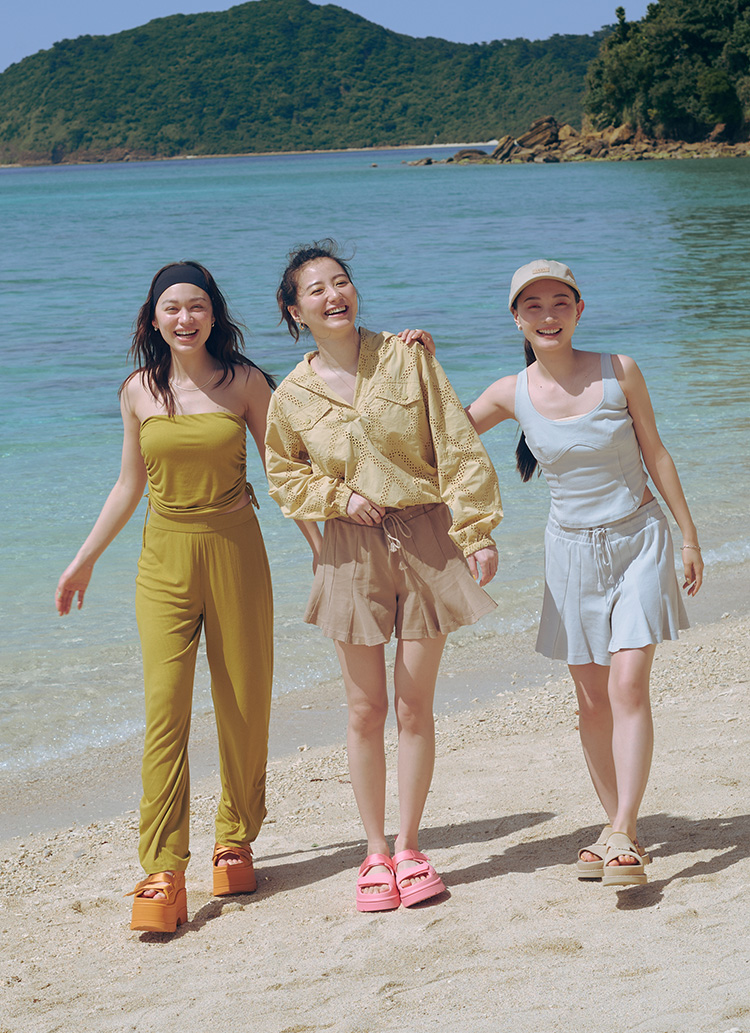Records, curry, theater, and more . Shimokitazawa is a place where all kinds of culture intersect to form a pleasant chaos. It is also a town where secondhand clothing culture is so deeply rooted that if you throw a stone at a secondhand clothing store, you are likely to hit it. However, there is probably no other vintage clothing shop in the world that specializes in hats and vases.
Running such an unprecedented and one-of-a-kind "sowhat vintage" are Taro Kato and Yoshizumi Umeshita. They told us how they came up with their unique lineup in a light-hearted talk like a comic dialogue, but in fact, these two are quite hard workers.
SHOP
A vintage store specializing in hats & vases by Taro Kato, former manager of the vintage clothing store "Flamingo," and Yoshizumi Umeshita. The hats are from the street, America, Europe, Morocco, Guatemala, etc., and come from different origins and genres. The shop was launched in April 2019 as an online vintage clothing store and opened a physical store in Shimokitazawa in February 2009.
Instagram: @sowhatvintage_shimokitazawa
Instagram: @sowhat_flowervase
The "hat" was a bright spot in a desperate attempt.
. Can you tell us a bit about the launch of "Sewat Vintage"? Did you specialize in hats from the start?
KATO: Not at all. My taste was in full bloom, and I mainly dealt in what I thought was interesting.
Is it a kind of a quirky place?
Kato: Yes, that's right.
Umeshita: But it didn't resonate at all, I think it was too soon (laughs).
Kato: Right (laughs).
For example, what kind of items did you pick?
KATO: For example, there are many American-made "Converse" at ....... But I collect Japanese-made series. I collect Japanese-made items. I also like 70's poly shirts with big collars. I like clothes that are sleeping in a corner, rather than those that are popular myself. I collect such items.
. So it was a pretty core lineup.
Kato: Yes, that's right. We both worked at a vintage clothing store called "Flamingo" before. I think they cater to a wide range of people, and I think that may have been a reaction to that. . Like we wanted to try something different from what we were doing before.
However, we had been working with such a lineup for about a year, and, well, it didn't sell at all, and it was very hard.
What made you shift to hats instead of clothes?
KATO: After a year of doing clothes, I felt like I was in a quandary, so I did my own analysis of vintage clothing stores that seem to sell well online or have pop-ups at major select stores, and I realized that they all specialize in something. . like vintage accessories, bags, etc. .
I think there might be a lot of places that are like that.
KATO: Yes, that's right. I was thinking about what to specialize in at 3 or 4 am, and I suddenly realized that if you take out the "w" in "so what," you get "hat" (laughs). (Laughs.) Since I myself love hats, I decided to put out a collection of about 50 hats I had collected up to that point. The response was quite positive. They said, "This is good, isn't it? I thought, "This is good, isn't it?
So that's when you decided to focus solely on hats?
KATO: No, at the time, I felt like it was just a hat project for "sewat. About a month or two after I started the project, I was invited to do a pop-up at a vintage clothing store "easychic" in Asagaya, which I knew. That was a turning point for me.
I see.
KATO: For a while after that, I also sold used clothing in parallel, and I was given the opportunity to do a pop-up at a friend's store called "Morning Glory (*now HIMSELF)," and from about the time the state of emergency was declared over, I began to open a store in Shimokita Line Street on a daily basis. I started to open a stall at Shimokita Line Street every day around the time the emergency was declared. At that time, I opened a pop-up 3 times a week, and the rest of the time I was immersed in my part-time job. At first, I put clothes on the shelves, but I found that only hats were selling, so I decided to focus solely on hats.
Did you pick unusual hats as well?
Yes, in the beginning, there were many strange items, just like clothes (laughs). But after I decided to focus solely on hats, I had a change of heart. Until then, I put my own likes first, but when it came to hats, I began to choose items that could be worn by anyone, no matter what they were wearing. As the number of customers who came to my shop increased, I began to think that I would be happier if my customers were happy with my hats rather than putting my own personal preferences first.
Unexpected encounters gained from refraining from going out.
. And now you are also developing vases, aren't you?
KATO: Originally, we had talked about wanting to start a store together, but when we started up, she was still working at "Flamingo" and the only cards we both had were for vintage clothing. We decided that we should learn something else, so I decided on hats and she decided on vases. But why a vase?
Umeshita: When the state of emergency was declared last year, I spent a lot of time inside the house and bought some flowers to decorate my home, but I didn't have a vase. . Then I started looking at vases, and that's when I fell in love with them.
. I understand that more and more people are rethinking their lifestyles in the wake of the voluntary curfew.
Umeshita: I used to be the type of person who went outside on weekends and holidays, so I never used to decorate my room with flowers. But after being cooped up at home for so long, I began to hate the fact that there was nothing in my room. I wanted to go outside, and I wanted to go abroad, but I couldn't, so I wanted to feel something extraordinary in my house. And I thought, "Well, I'm the same way, so maybe everyone is the same way (laughs).
Kato: I see , that's where it starts.
Umeshita: Before working at "Flamingo," I graduated from culinary school and worked in a restaurant, so I like both cooking and vessels. But I thought I should learn more about vessels because they are very deep, and vases, including the things connected to them. Vases and vessels are similar in some ways, so I'm learning a lot.
So you started making vases rather recently. Are there any similarities between vases and vintage clothing?
Umeshita:It is similar! Like vintage clothing, it reflects the local character, each piece has its own history, and some are designer, so the picking process is almost the same as for vintage clothing.
I'm sure it's a good dig.
Umeshita: Yes, there are many Japanese vases that seem to have been made under the influence of foreign countries, and there are also vases made in Japan but with foreign designs, such as Scandinavian vases that were popular in this period, so I thought it would be fun to mix and match them in a room.
. It is similar to coordination. Of course there is the visual design of vintage clothing, hats, vases, etc., but it becomes even more interesting when you know the background of the object as well.
KATO: I have worked in secondhand clothing stores throughout my early 20s, a sensitive time for me, so I always think in terms of secondhand clothing. Even when I look for new things other than clothes, I always look for something in common with secondhand clothing (laughs).
Until now, you have mainly opened stores on the Internet or in Shimokitazawa, but how did you come to open an actual store?
KATO: This is a very simple reason, but it is very cold in winter when I have a stall outside. I don't like the cold. That's why I decided to open a restaurant (laughs).
Umeshita: You were no good even when it was hot (laughs).
Was that the reason? (Laughs)
KATO: Partly because it was hot and partly because it was cold, but as we continued to open stalls, the amount of hats we had increased to the point where the tables were too full. I wanted to show a variety of hats, but I also felt bad that the customers were having a hard time looking at them. Even if I took beautiful pictures on Instagram, I would be shocked if people thought they were not what they had imagined when they came to the storefront. I was confident in my lineup, and I wanted people to see a variety of items, but I had a dilemma of how to present them. Even when customers came to the store, they were sweating in the middle of summer, and I always wanted to provide a good environment for them to view the items.
Umeshita: And if it was a windy day, you couldn't put a vase on the floor.
Kato: Yes, I was really sorry to have to turn them down, even though they came for the vase. If no one had come, we might not have opened the restaurant (laughs).
. a wealth of drawers due to omnivorous nature.
Let's talk about the new store. The interior is a blend of Japanese and Western styles.
KATO: I like both of them, and I couldn't choose one (laughs). I wanted to create a space like a Japanese-style room, but I felt that if that was the only space, street-like items would not fit in, so I created a border between the Japanese-style room in the back and the overseas-style room in the front. So I divided the space into two distinct areas: the Japanese-style room in the back and the foreign-style room in the front. I thought it was interesting (laughs).
Umeshita: Japanese tableware can be placed, and Scandinavian and European colorful vases can be laid out easily.
What are your plans for the future?
KATO: I think we will always want our customers to have fun, but we also want to do interesting things. To put it another way, we may no longer be a store of hats and vases (laughs).
For example, did you suddenly become a sock specialty store?
Kato: It's very possible (laughs). For better or worse, I don't think it's necessary to stick to hats and vases. If the customers are happy, then so be it. . besides, I'd like to put some clothes in there again, and I'm also interested in furniture. But I don't think it's a good idea to do things halfway, so I'd like to go all the way to the point where I can proudly say, "If it's hats and vases, I'm the best in Japan.
Have your clothes changed in any way?
KATO: My love of vintage clothing is unchanged, but I have gone through many changes. There was a time when I was into outdoor stuff and only wore Patagonia, and when I was skating, I was into Vans, Dickies, and Margiela, and wore very simple clothes (laughs).
. You have worn many different genres, and this is reflected in your lineup of hats, isn't it?
Umeshita: Maybe so, because I'm bored and have worn many things.
Kato: Indeed . Most of the hats in the store are of a genre that I have worn before. Caps, beanies, hats, Kangol hats, ethnic hats, and reggae-like tums.
If you ever wear a tam, you have a full complement (laughs).
Kato: I also have a do-rag (laughs). I listen to hip-hop and rock, and I am influenced by many things. . Maybe that's what I use in my customer service. There are many routes I have taken, so no matter what genre of clothes people wear, I can always recognize them.
. That kind of genre-less aspect is similar to your previous work at Flamingo, isn't it?
Umeshita: Yes, I learned a lot because I was mixing things up and putting together displays.
KATO: It was not a concept store, but rather a store that had something for people of any age in any genre, so I think that is what we are getting out of it now.
sowhat vintage
Address: Famille Kitazawa, 2-29 Daizawa, Setagaya-ku, Tokyo
Hours: 12:00 - 20:00
Instagram: @sowhatvintage_shimokitazawa
Instagram: @sowhat_flowervase


